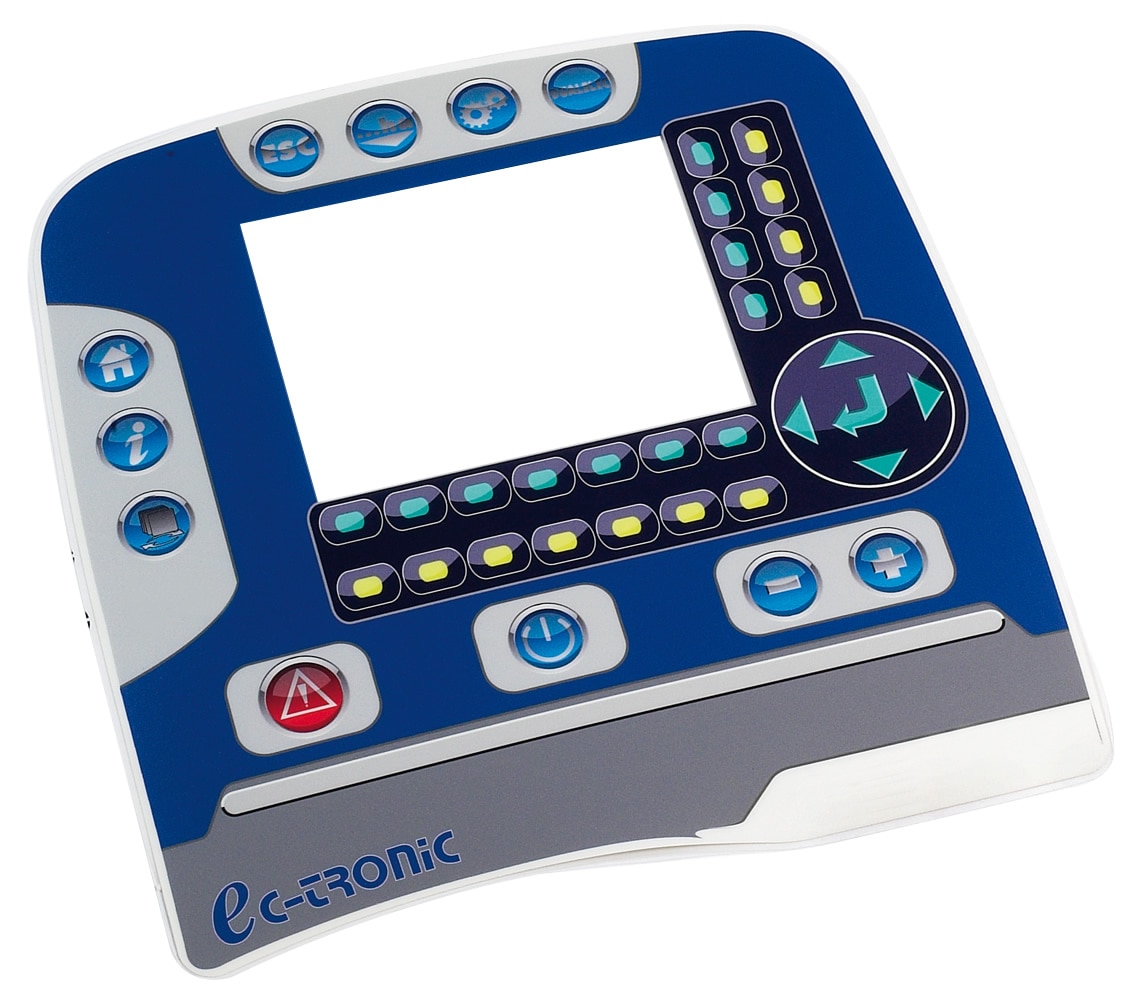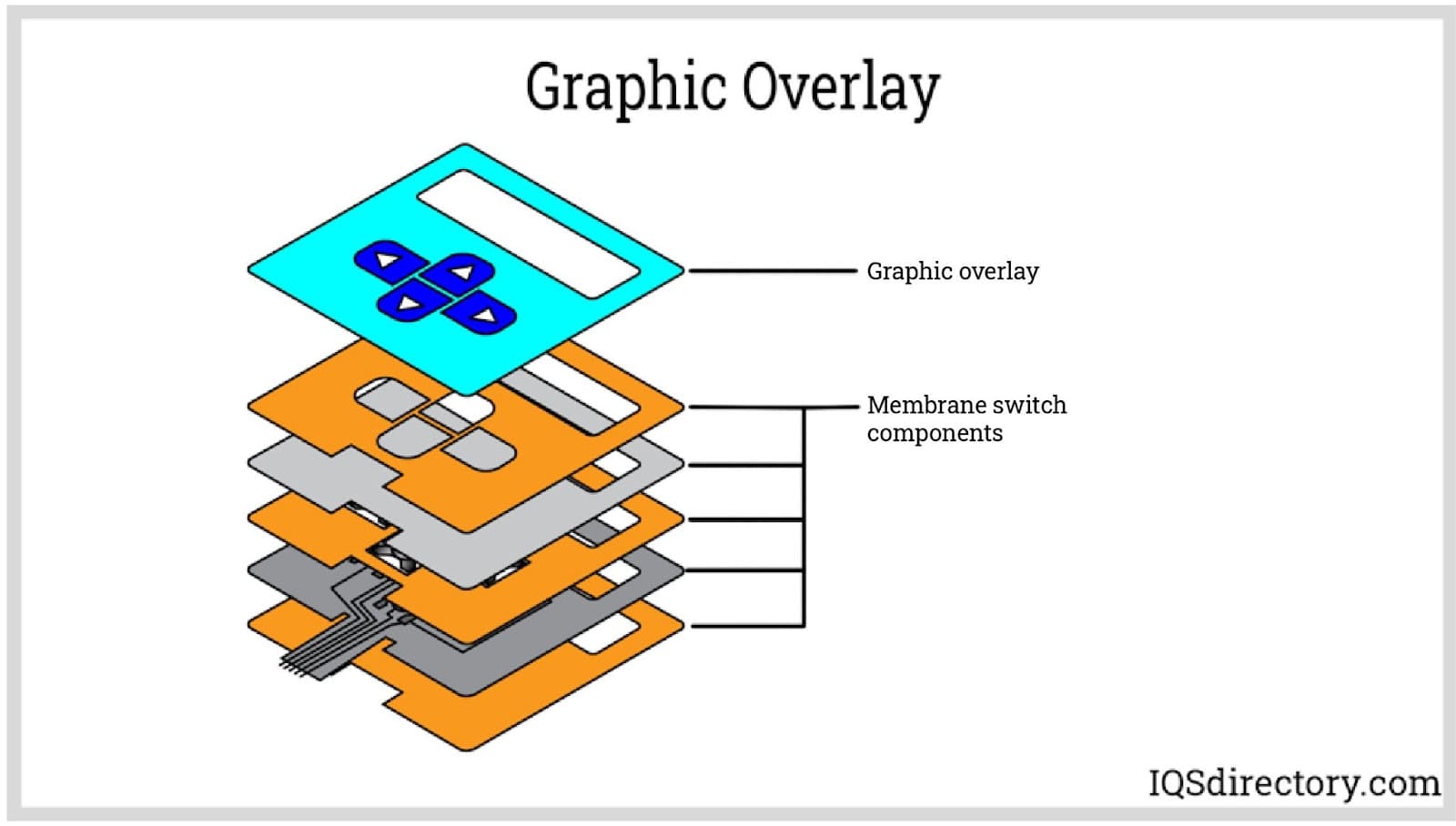Comprehending the Value of Membrane Switch in Modern Electronic Devices and Their Applications
Membrane switches over offer as a crucial component in contemporary electronics, providing an effective interface for user interaction. Their light-weight and customizable nature makes them appropriate for a series of applications across diverse industries. Comprehending their vital parts and advantages can offer insights into their growing importance. As modern technology continues to advancement, the development of Membrane changes elevates inquiries concerning their future applications and layout advancements. What lies in advance in this dynamic area?

What Are Membrane Switches?
Membrane buttons are vital parts in contemporary electronic devices, offering as interface that help with interaction in between gadgets and individuals. These buttons include numerous layers, consisting of a graphic overlay, a glue layer, and a circuit layer, all of which interact to develop a resilient and practical interface. The layout permits for a level, inconspicuous service that can be customized relating to size, form, and visual look, making them suitable for various applications, from customer electronic devices to clinical gadgets. The tactile responses offered by Membrane changes enhances customer experience, while their resistance to dust and dampness makes them excellent for challenging atmospheres. Membrane buttons can integrate functions such as backlighting and published graphics, additionally increasing their functionality. Their adaptability and toughness make them a recommended selection in markets where dependability and ease of use are paramount, ultimately adding to the smooth procedure of contemporary electronic devices.
Key Components of Membrane Switches Over
While various components add to the functionality of a membrane button, 3 primary layers play substantial roles in its style and operation. The top layer, normally made from a long lasting polymer, acts as the interface for user communication, usually including printed graphics and icons. Beneath this is the spacer layer, which keeps the essential range between the top layer and the circuit layer. This spacer layer warranties that the switch turns on only when pressed, avoiding unintended inputs. The circuit layer has conductive traces that complete the electrical circuit when the top layer is depressed. These traces can be made from various products, including copper or silver. Together, these elements develop a durable and trusted device that is small and versatile, appropriate for a wide variety of digital applications, from home home appliances to clinical tools. Understanding these vital components is crucial for appreciating the total functionality of Membrane buttons.
Advantages of Making Use Of Membrane Switches Over

Membrane Switch Manufacturing Process
Comprehending the Membrane button production process reveals the elaborate actions associated with creating these essential elements. The procedure generally begins with the style stage, where requirements and formats are developed using specialized software application. Following this, the visuals overlay is printed on an adaptable substratum, often making use of high-resolution printing methods to guarantee clearness and precision.Next, the adhesive layers are used, which offer to bond the different components together. The circuit layers, made from conductive inks or materials, are then published onto a different substrate. These layers are thoroughly lined up and laminated to develop a useful switch.After setting up, the buttons undertake examining to validate functionality and longevity. Quality control actions are executed throughout the procedure to identify and fix any issues. The finished Membrane switches are packaged and prepared for distribution, all set to meet the demands of modern-day electronic applications.
Applications of Membrane Changes in Different Industries
Membrane switches are progressively used throughout different sectors, especially in clinical equipment and consumer electronic devices. In the medical area, they offer reliable control user interfaces for devices that need precise procedure. In consumer electronic devices, these switches improve individual communication by using sleek and receptive user interfaces. Receptive Medical Tools Control
Countless contemporary clinical devices utilize Membrane switches for streamlined procedure and enhanced individual communication. These switches supply a trusted, durable interface for a range of applications, consisting of analysis tools, patient monitoring systems, and surgical see this page instruments. Their personalized styles permit particular layouts that can accommodate the one-of-a-kind requirements of medical care specialists, guaranteeing instinctive navigating and efficient accessibility to important features. Furthermore, Membrane buttons are resistant to contaminants, making them suitable for clean and sterile atmospheres. The tactile responses they supply can improve customer self-confidence, minimizing the risk of mistakes during crucial clinical procedures. Generally, the integration of Membrane buttons in clinical equipment considerably contributes to boosted functional get redirected here performance and patient security in medical care setups.
Consumer Electronics Interfaces
In the domain name of customer electronic devices, Membrane switches play a crucial duty in enhancing interface across a vast array of gadgets. These switches are integral to products such as remote controls, microwaves, and pc gaming consoles, giving a effective and easy to use interface. Their style enables a seamless assimilation of graphics and performance, allowing manufacturers to develop streamlined, modern-day looks without compromising usability. Membrane buttons are likewise recognized for their durability, typically standing up to extensive use and direct exposure to numerous ecological conditions. Additionally, they can integrate functions like backlighting and tactile comments, more improving the user experience. As consumer needs for innovative yet user-friendly interfaces grow, Membrane switches remain to be a necessary element in advancing digital gadget capability.
Style Factors To Consider for Membrane Switches
Creating effective Membrane changes calls for mindful interest to numerous aspects that influence both capability and customer experience. One important factor to consider is the choice of materials, as they can affect sturdiness, tactile comments, and aesthetic charm. Picking a suitable adhesive is crucial for ensuring long-lasting attachment and resistance to ecological factors.In enhancement, the format and design of the switch must fit individual communication, with switch dimensions and spacing optimized for simplicity of usage. The consolidation of review graphics and labeling should prioritize clarity and visibility under various illumination conditions.Consideration of electrical characteristics, such as actuation pressure and button sensitivity, will boost the responsiveness of the Membrane button. The layout needs to fit producing processes to guarantee cost-effectiveness and prompt manufacturing. On the whole, a well-thought-out style improves both the individual and the performance experience of Membrane buttons in modern electronic devices.

Future Trends in Membrane Switch Technology
As innovation proceeds to progress, Membrane switches are positioned to incorporate new developments that will boost their functionality and application in numerous fields. One substantial fad is the consolidation of resilient and adaptable products, which will increase the life-span and reliability of these buttons. Enhanced surface textures and customizable graphics are additionally expected, enabling even more instinctive user interfaces.Moreover, the assimilation of smart technology, such as touch-sensitive surfaces and haptic responses, is anticipated to boost individual communication, making Membrane switches more appealing and responsive. Furthermore, advances in published electronic devices will allow a lot more complicated wiring within thinner profiles, even more increasing layout possibilities.Sustainability will certainly additionally play an important duty in future developments, as producers discover eco-friendly products and production processes. Generally, these patterns will guarantee that Membrane switches over stay pertinent and vital in an interconnected and significantly electronic globe.
Frequently Asked Concerns
Just How Do Membrane Changes Contrast to Typical Mechanical Buttons?
Membrane switches offer benefits over typical mechanical buttons, including decreased size, lighter weight, and boosted toughness. They usually provide a sealed surface, boosting resistance to dirt and moisture, making them ideal for diverse applications.
What Materials Are Frequently Used in Membrane Switch Building And Construction?

Can Membrane Changes Withstand Extreme Environmental Conditions?
Membrane buttons can hold up against severe environmental conditions, depending on their layout and materials. High-grade constructions frequently include sturdiness versus temperature fluctuations, humidity, and exposure to chemicals, making them ideal for numerous demanding applications across industries.
How Much Time Do Membrane Switches Usually Last Before Failure?
Membrane switches over normally show a life-span ranging from 1 to 10 million actuations, depending on elements such as use regularity, environmental problems, and producing quality. Routine maintenance can extend their longevity and operational dependability considerably.
Are Membrane Switches Over Adjustable for Specific Applications?
Membrane buttons are certainly adjustable for specific applications. They can be customized in functionality, layout, and dimension, enabling makers to fulfill one-of-a-kind user requirements and boost product looks while keeping operational performance and durability. Membrane buttons are necessary components in modern electronics, offering as user interfaces that help with communication in between gadgets and individuals. The tactile responses given by Membrane changes enhances customer experience, while their resistance to dirt and moisture makes them suitable for testing atmospheres. The incorporation of graphics and labeling must prioritize clarity and visibility under different lights conditions.Consideration of electrical qualities, such as actuation pressure and button sensitivity, will certainly improve the responsiveness of the Membrane button. Improved surface structures and personalized graphics are additionally expected, permitting for even more user-friendly customer interfaces.Moreover, the assimilation of smart modern technology, such as touch-sensitive surface areas and haptic comments, is anticipated to improve customer communication, making Membrane changes more responsive and interesting. Membrane switches deal advantages over typical mechanical buttons, consisting of minimized size, lighter weight, and boosted longevity.